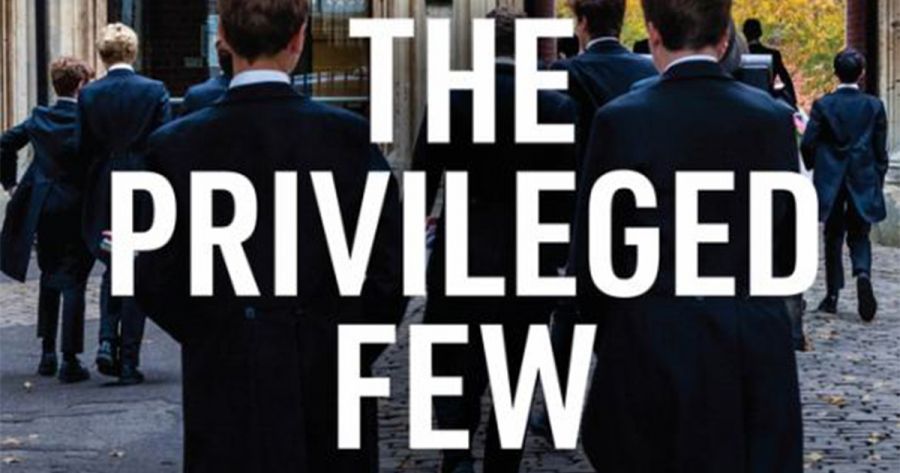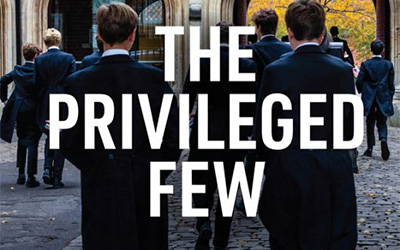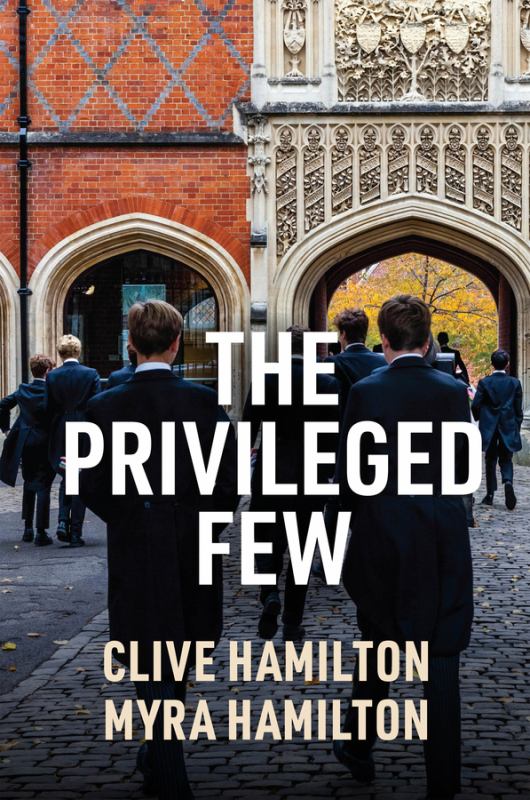
- Free Article: No
- Contents Category: Society
- Review Article: Yes
- Article Title: Cogs of privilege
- Article Subtitle: How wealth and power perpetuate themselves
- Online Only: No
- Custom Highlight Text:
This new book by Clive Hamilton and Myra Hamilton provides a detailed and elegantly written analysis of the nature and causes of inequality in Australia – a problem that has increased markedly over the past forty years. The study focuses on the role of élite privilege, rather than on wealth itself. The authors assert that élite privilege – which they regard as a species of advantage distinct from that of male and racial privilege – has not been sufficiently theorised and, more importantly, is hidden in plain view. The aim of the book is to ‘make visible the practices, beliefs and attitudes that characterise elite privilege and allow its reproduction’. A large part of the book, written by this father and daughter team, is concerned with demonstrating the ways in which the non-meritocratic nature of Australian society is systematically concealed.
- Featured Image (400px * 250px):

- Alt Tag (Featured Image): Adrian Walsh reviews ‘The Privileged Few’ by Clive Hamilton and Myra Hamilton
- Book 1 Title: The Privileged Few
- Book 1 Biblio: Polity, $24.95 pb, 251 pp
- Book 1 Cover Small (400 x 600):

- Book 1 Cover (800 x 1200):

- Book 1 Readings Link: https://www.readings.com.au/product/9781509559718/the-privileged-few--clive-hamilton-myra-hamilton--2024--9781509559718#rac:jokjjzr6ly9m
This Covid exceptionalism is undoubtedly in violation of two distinct norms that must be in play if Australia is to live up to its much touted ideal of classlessness. First, it is at odds with the egalitarian principle that we all have shared responsibilities for societal burdens. Accordingly, in times of imminent disaster, Covid-19 being one example, all must sacrifice some of their interests to realise collective benefits and goals. Second, Covid exceptionalism is in considerable tension with the meritocratic principle that social benefits should be allocated to those who are most deserving. Again, during lockdowns, special favours were given to members of the élite, which few would regard as being deserved in terms of effort or skills.
The Hamiltons employ examples from the Covid lockdowns as a springboard for a more thoroughgoing critique of the notion that, in contemporary Australia, benefits are allocated in proportion to people’s genuine merits and needs. They provide a long and detailed list of ways in which the privileged gain greater access to desirable goods and services, simply by virtue of their power and networks. They reject what they refer to as the ‘mutually agreed fiction’ that in Australia desirable goods and services are granted on the basis of merit rather than power. It is worth noting here that their categorisation of the privileged includes not only the wealthy but also influential figures in politics, bureaucracy, media, culture, and academia. In this sense they are not simply engaged in ‘old school’ class analysis. Indeed, they are adamant that social theory needs to move away from the ‘problematic of the proletariat’.
Furthermore, they insist that the widespread promulgation of a myth of meritocratic distribution also serves the ideological function of legitimating privilege. If those in positions of great advantage achieved them through their superior efforts or abilities, this assists in demonstrating the legitimacy of current patterns of distribution. Here, the concept of ‘naturalisation’ – which they define as the framing of élite privilege as a ‘natural and unchangeable feature of social life’ – plays a key role in their analysis. The authors also note that the privileged classes navigate the world with an ease, confidence, and knowingness that makes it appear only natural that they should be generously rewarded. In this discussion, the Hamiltons draw heavily on Pierre Bourdieu’s classic work Distinction: A social critique of the judgement of taste (1979), which explains how differences between social classes are maintained through behaviours, dispositions, and attitudes.
Of course, the ‘practice’ of privilege is not merely communicative: there are major institutions which have a pivotal part to play. In criticising the non-meritocratic nature of much of Australian society, the Hamiltons have élite private schools in their sights (smaller and less wealthy independent schools are excluded from their analysis). The role of private schools in creating networks of influence is discussed at great length; the Hamiltons describe this type of school as the ‘primary mover’ for the reproduction of privilege. Two chapters of the book provide detailed accounts of the extreme kinds of perquisites private-school graduates enjoy. Unsurprisingly, the authors recommend the abolition of state subsidies for private schools and an end to tax exemptions for donations to private schools. Thus, their arguments are not merely critical of the current system; they also sketch a number of policy prescriptions, including, among other things, increased taxation on inheritance, revision of the honours system, and a revamping of university entrance requirements to increase access for those from less favoured backgrounds.
Perhaps the most intriguing claim in the book is the suggestion that élite privilege is a distinct species of unearned advantage: the authors argue that it should not be confused with racial or gender-based discrimination. The Hamiltons also claim that because the progressive left, via the widespread adoption of identity politics, has shifted its focus from redistribution to recognition, it now lacks the ability to critique – and possibly even to recognise – various unjustifiable exclusions. (Their ideas are reminiscent of the French theorist Olivier Roy’s book The Crisis of Culture: Identity politics and the empire of norms [2024].) Unfortunately, an explanation as to why an exclusive focus on recognition might blind us to the perils of class discrimination is not forthcoming.
One disappointing feature of the book is that the account of the harms caused by the system of privilege is underdeveloped. The authors talk in very general terms of the dangers it presents to both democracy and civil society, but other than charting the disillusionment unfairness produces, a theoretical account of the nature of the damage the system foists upon the well-being of the majority is largely missing. Significantly, the book does not investigate the economic consequences of our system of privilege. However, these are minor criticisms which do not detract from the overall quality and value of the book.
How realistic, then, is the Hamiltons’ account of contemporary Australia? Are we all mere ‘cogs in the machine of privilege’, as they suggest early in the text? Without wishing to sound too Panglossian, the latter description is surely overstated, since unfair distribution of advantage remains contested by many groups concerned with the elimination of inequality and, crucially, these groups retain significant influence. That said, The Privileged Few identifies key ways in which neo-liberal ideas have come to replace those of social democracy in everyday life in Australia. For those who demand a more just spread of social resources – be they meritocrats or egalitarians – the authors outline compelling reasons as to why change is still required.


Comments powered by CComment